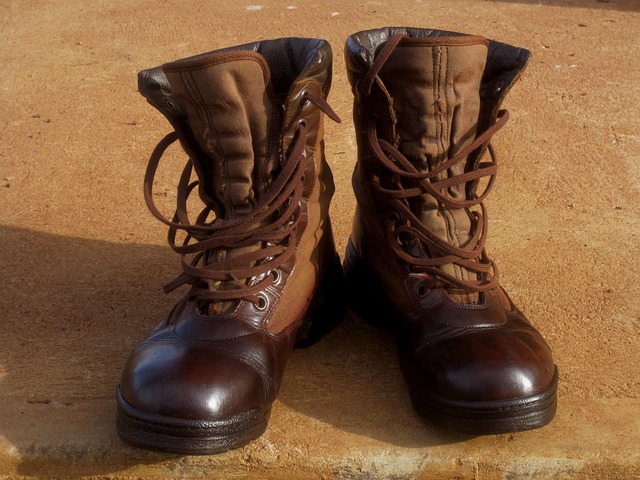How to Choose and Maintain Good Army Boots
Army boots serve as critical equipment for military personnel, outdoor enthusiasts, and professionals requiring durable footwear in demanding environments. The right pair combines protection, comfort, and longevity while withstanding harsh conditions. Understanding key features, proper fitting, and maintenance practices ensures optimal performance and extends boot lifespan, making informed selection essential for anyone needing reliable tactical footwear.

Military and tactical footwear represents a specialized category designed to meet rigorous performance standards. Whether for active duty personnel, law enforcement, or civilian applications requiring robust protection, selecting appropriate army boots involves understanding construction quality, fit requirements, and long-term care practices.
Essential Features of Good Army Boots
Quality army boots incorporate several critical design elements that distinguish them from standard footwear. Steel or composite toe protection shields feet from impact hazards, while puncture-resistant soles prevent penetration from sharp objects. Ankle support systems provide stability during extended wear and uneven terrain navigation. Moisture-wicking linings manage perspiration and temperature regulation, essential for comfort during prolonged use. Additionally, slip-resistant outsoles ensure reliable traction across various surfaces, from wet concrete to loose gravel.
Breathability features, including mesh panels or perforated leather sections, prevent excessive heat buildup while maintaining structural integrity. Quick-drying materials reduce downtime between uses and minimize bacterial growth that can cause odors or foot health issues.
Finding the Right Fit and Sizing
Proper boot fitting extends beyond standard shoe sizing conventions. Army boots should accommodate thick socks without creating pressure points or restricting circulation. The heel should remain secure without slipping, while toes require adequate space to prevent bruising during downhill movement. Width considerations prove equally important, as narrow or wide feet need appropriate accommodation to prevent blisters and discomfort.
Timing affects fitting accuracy significantly. Feet naturally swell throughout the day, making afternoon or evening fittings more representative of actual wear conditions. Walking tests in-store help identify potential pressure points or gait issues before purchase. Remember that quality boots often require a break-in period, but should never cause pain or significant discomfort initially.
Materials and Construction Explained
Leather remains the predominant material choice for army boots due to its durability, water resistance, and moldability to foot shape over time. Full-grain leather offers superior longevity compared to corrected-grain alternatives, though at higher cost points. Synthetic materials provide lightweight alternatives with faster break-in periods, though potentially reduced lifespan.
Construction methods significantly impact boot performance and durability. Goodyear welt construction allows for resoling, extending boot life considerably. Direct-attach methods create lightweight options but typically prevent repair. Stitching quality, particularly in high-stress areas like toe boxes and heel counters, indicates overall construction standards.
Waterproofing treatments vary from membrane systems like Gore-Tex to chemical applications. Membrane systems provide reliable protection but may reduce breathability, while chemical treatments require periodic reapplication but maintain better ventilation.
Traction, Support and Performance in the Field
Outsole design directly influences performance across different terrains and conditions. Deep lug patterns excel in mud and loose surfaces but may collect debris. Shallow treads work better on hard surfaces and urban environments. Multi-directional tread patterns provide versatility across varied conditions.
Shank systems, whether steel, composite, or thermoplastic, provide arch support and puncture protection. Stiffer shanks offer better support for heavy loads but may reduce flexibility for extended walking. Midsole cushioning systems absorb impact while maintaining stability, crucial for preventing fatigue during long periods of standing or walking.
Ankle support mechanisms, including padded collars and structured heel counters, prevent injury during lateral movement while maintaining comfort. However, excessive rigidity can restrict natural foot movement and cause discomfort.
| Boot Type | Provider | Key Features | Cost Estimation |
|---|---|---|---|
| Combat Boots | Belleville | Leather construction, steel toe, waterproof | $150-250 |
| Tactical Boots | 5.11 Tactical | Lightweight, quick-dry, slip-resistant | $120-200 |
| Military Issue | Altama | Government specs, durable, basic features | $80-150 |
| Premium Tactical | Danner | Handcrafted, resoleable, lifetime support | $300-500 |
Prices, rates, or cost estimates mentioned in this article are based on the latest available information but may change over time. Independent research is advised before making financial decisions.
Care, Maintenance and When to Replace Them
Regular maintenance extends boot lifespan significantly while maintaining performance standards. Daily care includes removing debris, wiping down surfaces, and allowing complete drying between uses. Leather boots benefit from periodic conditioning to prevent cracking and maintain water resistance. Avoid excessive heat during drying, which can damage materials and adhesives.
Weekly deep cleaning involves removing laces and insoles for thorough washing. Brush away embedded dirt and apply appropriate cleaning products based on boot materials. Waterproofing treatments require reapplication every few months or after extended exposure to wet conditions.
Replacement indicators include worn tread patterns, separated soles, cracked leather, or compressed midsole cushioning. Structural damage to ankle support systems or punctured waterproof membranes also necessitate replacement. Quality boots may last 1-3 years with regular use, while premium options can exceed five years with proper care.
Proper storage in ventilated areas prevents mold growth and material degradation. Boot trees help maintain shape during storage periods, while cedar inserts control moisture and odors.
Investing in quality army boots pays dividends through improved comfort, safety, and longevity. Understanding construction details, fit requirements, and maintenance practices ensures optimal performance throughout the boot’s service life.




